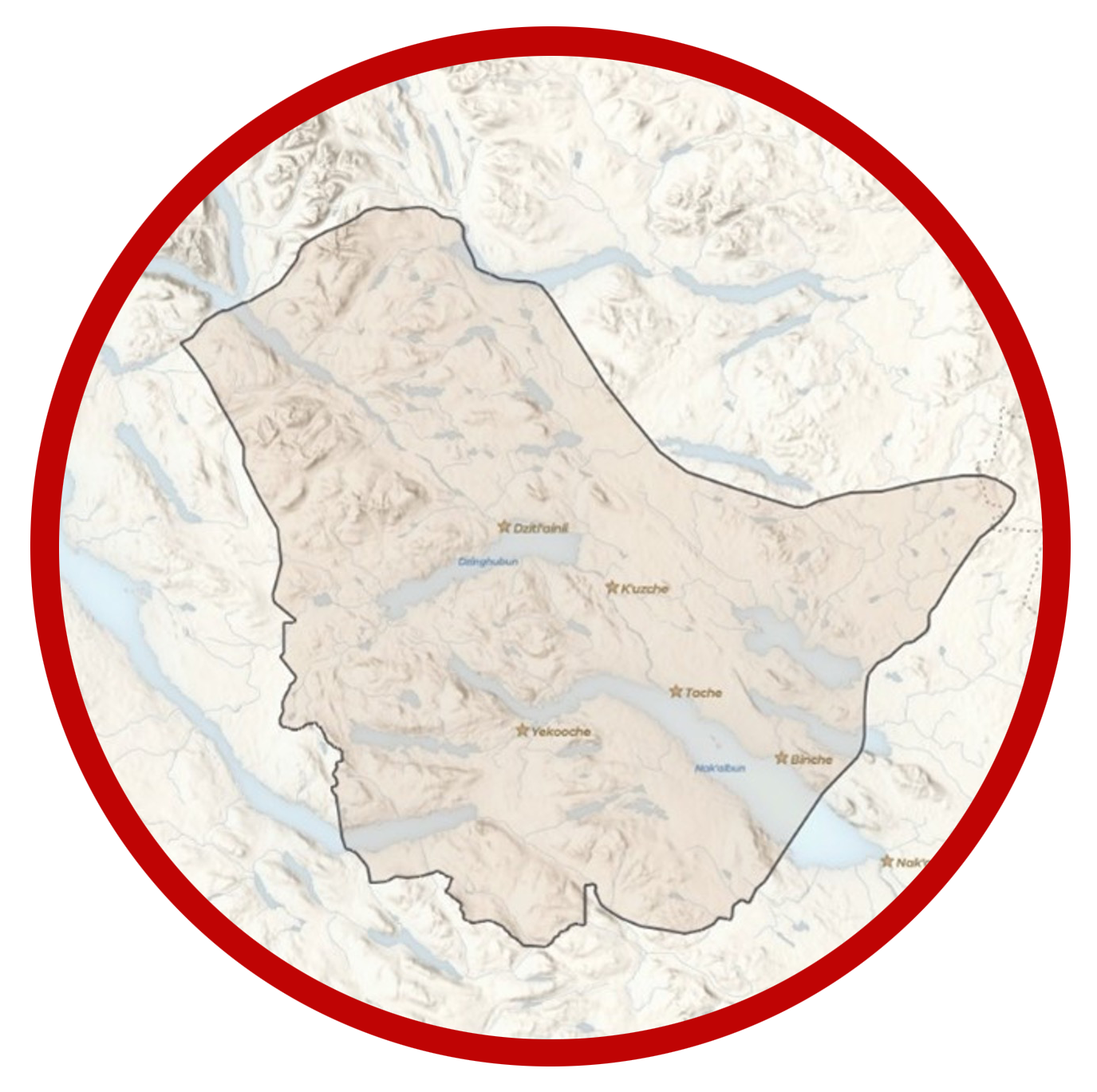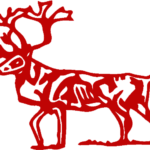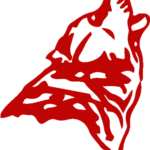Our Home
TL'AZT'ENNE ANCESTRAL LANDS
Tl’azt’en Nation traditional territory lies in the central interior of British Columbia, in the Upper Fraser River Watershed – the Stuart-Trembleur-Takla water systems.
Tl’azt’en Nation’s main villages are Tache, K’uzche, and Dzitl’ainli.
Our Dakelh neighbors have their villages at Binche to the south, Yekooche to the west, Nak’azdli to the southeast.
We are connected through our families, a common history, our culture and our language.

Our Mission
 Recognize and honor Tl’azt’en cultural systems that includes Elders, ‘Uza’-ne (Hereditary Title Holders), Clan Leaders, Keyoh Ghuhinli (Land Stewards) and Knowledge Keepers
Recognize and honor Tl’azt’en cultural systems that includes Elders, ‘Uza’-ne (Hereditary Title Holders), Clan Leaders, Keyoh Ghuhinli (Land Stewards) and Knowledge Keepers
 Build healthy communities through promoting our Dakelh heritage, language and identity
Build healthy communities through promoting our Dakelh heritage, language and identity
 Oversee the operations, procedures, laws, powers, and jurisdiction related to Tl’azt’en Nation and any other related activities arising from its mandate
Oversee the operations, procedures, laws, powers, and jurisdiction related to Tl’azt’en Nation and any other related activities arising from its mandate
 Promote, maintain, and protect Tl’azt’en Nation Rights and Title
Promote, maintain, and protect Tl’azt’en Nation Rights and Title
Our People
TL'AZT'ENNE
We are Dakelh-ne which means “the people who travel by water”. We are part of the vast Athapaskan language family that extends from the Arctic basin southward to our homeland in the central interior of British Columbia.
Our people are Tl’azt’enne – “the people at the end of the lake.” The lands and water surrounding Nak’albun (Stuart Lake) and Dzinghunbun (Trembleur Lake) have been home to our people since time immemorial.
Our Governance
BALHATS
We are governed by a matrilineal clan system, where children inherit their clan membership from their mothers. Our society was once exclusively governed by the clan systems through balhats (potlatch) where business was discussed and decisions were made on behalf of the people.
 Lusilyoo
Lusilyoo
 Lhts’umusyoo
Lhts’umusyoo
 Kw’unba Whut’enne (Granton)
Kw’unba Whut’enne (Granton)
 Lojuboo
Lojuboo
Today our administrative offices are located in the village of Tache, 53 kilometers northwest of the town of Fort St. James, British Columbia.
Tache has a population of about 600 people and our entire Tl’azt’en Nation membership is about 1,600.
We have an elementary school – Eugene Joseph Elementary School, which is named in honor of one of our ‘Uza’-ne (Hereditary Leader). Sumyaz Daycare (Little Star Daycare) provides daycare to our younger children, and a Health Center provides health services to the community.
Ndai za huka’ninzun-i ‘i zah ‘olhchoot
Just Take What You Need
Our Way of Life
SHIH HA'UZDUT'EN - We hunt, fish and trap for survival
Our people follow an annual cycle of harvesting foods and medicine that follow the plants and animals that are available in each of the seasons.
In the spring we hunt for ducks and rainbow trout, when summer comes we pick our medicines and berries, in late summer the salmon come back to our waters and we spend weeks setting net and preparing the salmon for the smokehouse, in the fall we fish for char and whitefish and do our moose hunting. During winter we ice fish and work on hides and beadwork. Winter is a time of story-telling and educating the young people about our culture.
If we take care of the land, the land takes care of us
Ndi yunk’ut bulh ‘ilho ts’inli
With this land, we are one
Our Land
NEYUN
Our people have been making a living off our territorial lands since time immemorial. Traditionally we governed and controlled access to our own resource areas such as mountains, islands, shorelines, hunting grounds, fishing grounds, and berry picking areas.
Today we manage two forest licenses – a community forest and a First Nation woodlands license – through our forest company Tanizul Timber Ltd.
Tl’azt’en Nation co-manages the John Prince Research Forest since 1993, where wildlife and forestry research takes place in partnership with the University of Northern British Columbia (UNBC).
The Tl’azt’en Nation Fisheries Program has an annual stock enumeration program and actively participates in the Fraser Salmon Management Council and the Upper Fraser Fisheries Conservation Association.
Throughout the territory, Tl’azt’en families have cabins and camps that are used for their seasonal subsistence harvesting. These families are stewards of their keyoh lands, where they continue to make their living off the land as their ancestors did.
Our Way
NEK'UNA
 Lusilyoo
Lusilyoo Kw’unba Whut’enne (Granton)
Kw’unba Whut’enne (Granton) Lojuboo
Lojuboo